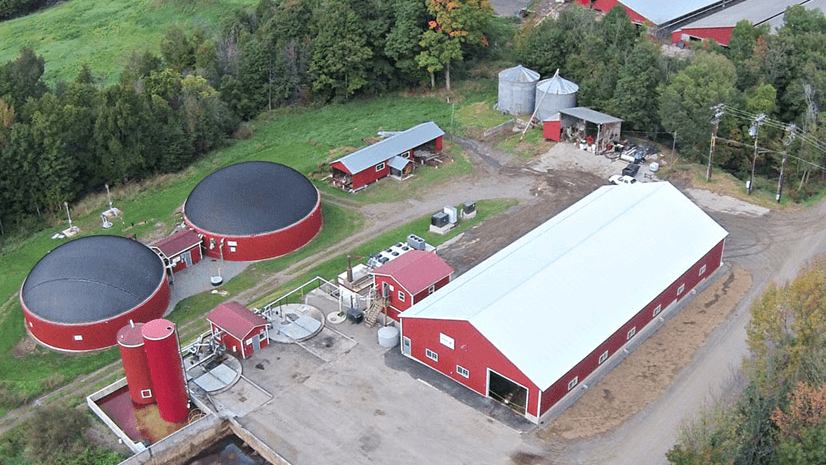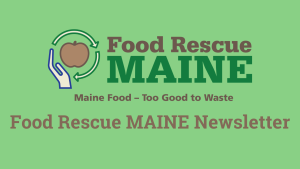
Food Waste Basics…What Is Anaerobic Digestion?
While I was very excited to work to end food waste in Maine with my internship with the Mitchell Center for Sustainability Solutions, I found the many food waste terms to be overwhelming. But with a few Google searches, I was able to put together the basics. If you also find food waste terminology to be confusing, I hope that you find the information below helpful.
First, here are a few key food waste terms that confused me:
-
Food waste is food that is discarded rather than being eaten. This happens in households, restaurants, and stores.
-
Food loss is food that is grown or processed but is unintentionally lost before it is eaten. This often occurs on farms, in storage, and during the transportation of food. Click here to learn more about food loss.
-
Food recycling– ReFED defines food recycling as, “capturing nutrients, energy, or other residual value by finding the highest and best use for any food or food scraps that remain.”
When you choose not to waste your food, there are three other primary waste options that you can take. You can feed people, feed animals, or recycle your food. When food is donated to feed people instead of throwing it away, we reduce hunger and food insecurity. If food is used as animal feed, we know farmers are directly using the food we cannot eat to feed their animals. When food scraps are recycled, they are often composted or processed through anaerobic digestion.
When I first heard about food recycling, I was interested to learn how it worked. Food recycling is actually an umbrella term for many different processes that repurpose the valuable nutrients in food. This can be done through composting, or through anaerobic digestion.
Compost is a process by which food decomposes to generate a rich fertilizer for our plants. (Click here to learn more about composting.) While composting is common, prior to delving deep into the world of food recycling, I had never heard of anaerobic digestion.
What is anaerobic digestion?
According to the Merriam-Webster dictionary, the word “aerobic” means that something is happening in the presence of oxygen. That being said, “anaerobic” is the exact opposite of that- meaning that something is happening in an environment where there is no oxygen.
This concept confused me at first. Don’t we encourage composting because when food does not have access to oxygen while it breaks down, it produces harmful methane gas? The answer is yes! But stay with me-
When we put our food into landfills, the food waste just sits in a pile with all of our other trash. When it gets covered by this stuff, the food begins to break down, and oxygen cannot get to it(hence the anaerobic environment). This also causes leachate and other problems. The moral of the story here is- food breaking down anaerobically is bad…. right?
The answer is sometimes. When food breaks down anaerobically in a landfill, we cannot control that environment- there are too many factors. With anaerobic digestion, your food scraps get sent to a facility designed solely to break down food and other organic matter. Here they are actually able to create a stable and controlled environment to make this process safe.
How does anaerobic digestion work?
All of the food scraps and biological waste goes into an enclosed facility, where microorganisms and bacteria break the food down. As this decomposition process happens, methane and other gasses are released. The facility then captures these gasses, and uses them as a heat or energy source. This way, the methane produced does not go into the atmosphere like it does in a landfill- but we are actually harnessing that energy.
During this process of breaking down the organic waste, there are byproducts, known as digestate, that are created. Many anaerobic digestion facilities have come up with other uses for these byproducts- like livestock bedding and fertilizer for farming.
Although Food Rescue MAINE focuses on food waste, anaerobic digestion facilities can process other forms of waste as well. To learn about all the other kinds of waste that anaerobic digestion facilities can process, click here to read this page from the EPA website.
Are you a visual learner? Try watching this one minute video about anaerobic digestion to learn more.
And always remember… Maine food is too good to waste.
Ellie H., Mitchell Center Student Intern
I am a gym-loving Harry Potter fan, who loves being outdoors and can always be found with my nose in a book.

